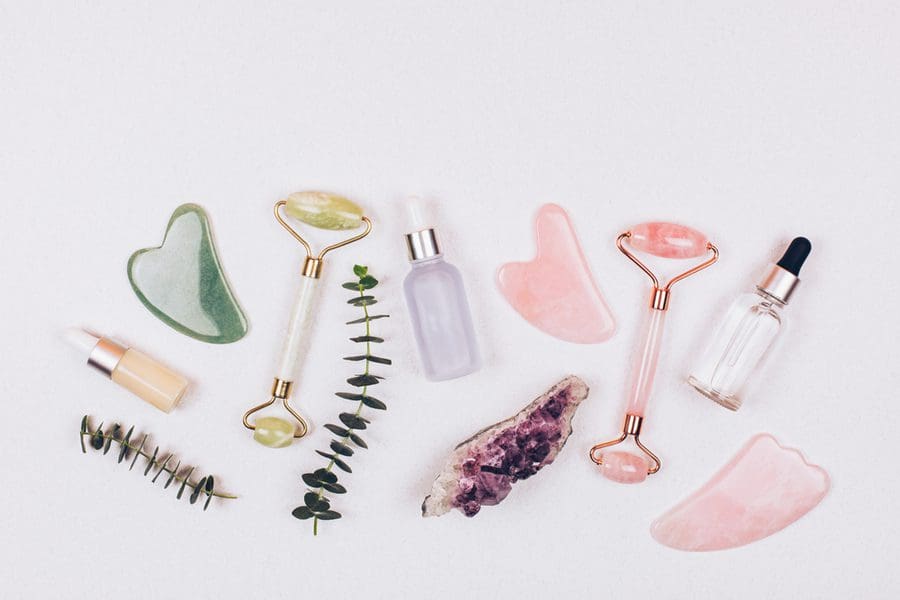Whether you’re a skincare minimalist who sticks to a trusted combo of cleanser and moisturizer, or you go all out with a 7 (or more!) step skincare routine, it can be overwhelming to find the right products and routine for your skin. Not only are there thousands of brands at all price points, from drugstores to celebrity dermatologists, but within each category, there are collections, lines, and trendy ingredients that are hard if not impossible to keep up with.
Even as a skincare enthusiast, it can be difficult to make sense of all the new skincare trends that seem to pop up weekly. How do you understand what you’re shopping for and what you’re putting on your face? We’re here to dissect the world of confusing skincare trends.
- Clean Skincare
Clean skincare is definitely more of a trend than a definable label. There is no legal or FDA-approved definition of what clean beauty means, which is why navigating this category is so confusing.
Brands like Sephora list certain products under their “clean” label and they define what ingredients (more like lack thereof) are considered clean, but outside of third-party definitions, “clean beauty” means little more than a buzzy branding phrase.
For an amateur skincare shopper, clean might seem like a word that means cruelty-free, safe, and lacking chemicals. The thing is, not all chemicals are bad, clean does not mean cruelty-free, and the term is often more of a marketing strategy than a seal of reliability.
It’s more time consuming, but if you are on the hunt for actual clean skincare, your best bet is to read the ingredients list. The fewer ingredients the better. The bottom line? Don’t take clean beauty branding at face value.
- Natural or Plant-Based Skincare
For those that follow a plant-based diet, it may seem only right to follow a natural skincare routine. Only using products from the earth sounds like a safe bet for your skin, but once again, natural can mean just about anything a brand wants it to mean.
“Natural” is also not a regulated term, so any company can use it as a label to describe their products. It can mean they choose not to use fragrance or comedogenic ingredients, or that they use the same ingredients as every other brand, but claim they’re natural.
These claims are advertising techniques to draw you in and get you to trust a brand with your money and your skin when in fact, reading the ingredients is the only way to know what is in your skincare.
- Cannabis Skincare
Yes, cannabis skincare is a thing and it is a big thing. Almost every brand, from CVS to Sephora, now has a CBD, hemp, or cannabis line of skincare products.
You’re probably thinking, “What? Is my skincare going to get me high?” Not at all. CBD, cannabis sativa, and hemp seed oil or extract are part of the marijuana plant, but don’t contain THC, which is what gives weed its psychoactive effects. CBD is legal and safe. The real question is, is it another sales tactic, or is it actually a quality ingredient?
Based on several studies, CBD can help your skin. It has heavy hitting anti-inflammatory properties, which aid in reducing redness and irritation caused by hormonal changes and acne. CBD might actually be the miracle ingredient you’re looking for to balance your skin.
That said, every brand’s quality will differ. Just as with other trendy ingredients, if CBD is not listed near the top of the ingredients list, the product might not contain enough to be effective.
- Glass Skin
Glass skin is a stunning, if idealistic beauty trend. It is a Korean beauty trend that focuses on smooth and flawless skin. To achieve this look, your skin must be perfectly clear, and well, glass-like.
Not only is this highly unattainable, but it is harmful to peoples’ self-image. Trying to achieve a look like this when you struggle with oily skin, hormonal acne, aging, or any other natural skin ailment is highly damaging. Glass skin routines, which focus obsessively on exfoliation and hydration, can definitely damage your skin’s barrier.
The creams, serums, and treatments that claim to offer the glass skin look are, on the whole, full of false promises. Sure, they may increase cell-turnover, hydrate the skin, and even balance your skin, but nothing can remove pores or imperfections. Even if a product labeled with the words “glass skin” has amazing and effective ingredients, it would be wise to keep your expectations based on reality. You may get a glow, and you may see improvement in your skin texture, but nothing can (or should!) make your skin look like glass.
- Tools
Facial massage is nothing new in the world of skincare. If you’ve ever gotten a facial, you’ll know massage is a pretty common practice at most spas. Recently, however, facial massage has become an at-home skincare trend.
You can find an endless array of facial tools that claim to tighten, brighten, clear, and essentially youth-ify your skin. From affordable jade rollers to the pricey Nurse Jamie tools, the options for diving into the facial massage trends are near limitless.
Is it just a trend? Or is at-home facial massage worth the cost and the time?
Yes and no. Some of the higher-end tools are best used by a professional who knows the proper techniques. A simple gua sha stone or jade roller, however, can be a simple yet effective way to increase the blood flow to your skin, aid in lymphatic drainage, and even help your creams and serums absorb better. And only takes watching a YouTube tutorial to learn a lymphatic drainage massage!






